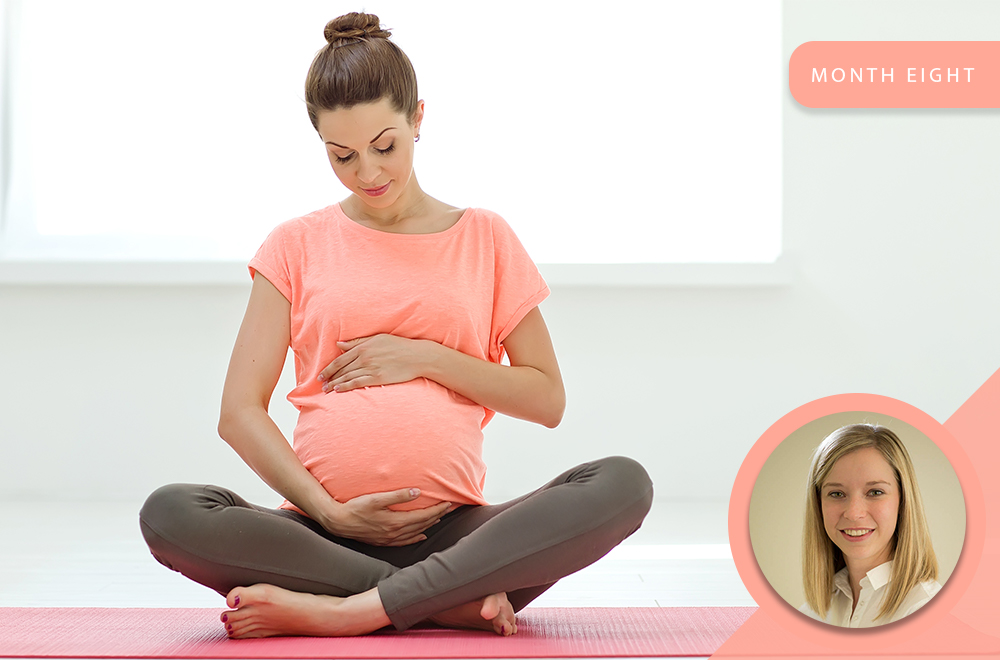
13 Jul Pregnancy: Month 8: A Physiotherapist’s Professional Opinion
You continue to pick up weight weekly. The rapidly growing fetus now starts to push against your rib cage and organs. This could lead to rib and middle back pain, possibly referring pain into the front of your chest.
The fetus pushing up into your rib cage will mean that your vital organs of which your lungs are one will have less space to move freely as they are pushed closer to each other. This will lead to shortness of breath and feeling like it is difficult to breathe. Remember that the shortness will not affect the fetus’ oxygen supply, as the placenta will get the oxygen it needs from your blood and supply it to the fetus. Heartburn and indigestion may increase, and Braxton Hicks contractions may become more regular with each successive month.
The pressure on your pelvis increases as the fetus increases in sizes and takes up space into the pelvic area as well. Your pelvis and the surrounding muscles play an important role in stabilising your back, giving your legs the freedom to move while your spine and pelvis are held steady. The increase in pressure on your pelvis and pelvic muscles can lead to pelvic girdle pain. Pelvic girdle pain feels like a sharp pain in your hip, groin or buttock, more so when putting pressure on one of your legs during activities such as walking, getting in and out of the car as well as turning in bed. Lower back pain can also be present at the same time. If you suffer from pelvic girdle pain, seek advice and treatment from your physiotherapist and gynaecologist. Your physiotherapist can supply you with a pelvic girdle support belt which can ease the pelvic girdle pain.
Sneezing, coughing and laughing may realistically cause urine to leak as your pelvic floor works much harder than normal to support the growing weight of the uterus and fetus. If you have been doing your Kegel exercises throughout your pregnancy this will most likely mean that you will not have to endure this complication.
EXERCISE OF THE MONTH: DOGWEE
1. Kneel on all fours, head in a neutral position with chin tucked in, shoulders broad, back relaxed and lower tummy gently pulled in.
2. Transfer your weight onto your right knee and both hands.
3. Lift your left leg up and out as high as possible without twisting the lower back, keeping the left hip and knee held at a right angle with the hip slightly turned out.
4. Hold the position for 1 – 2 seconds and slowly lower the leg but don’t let the knee touch the floor and repeat.



No Comments